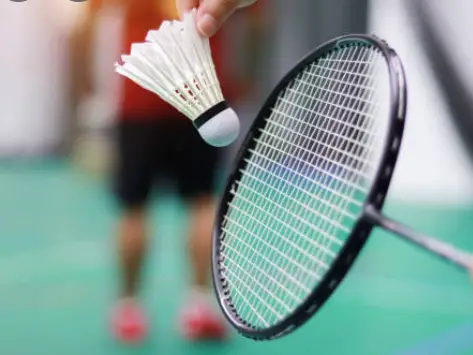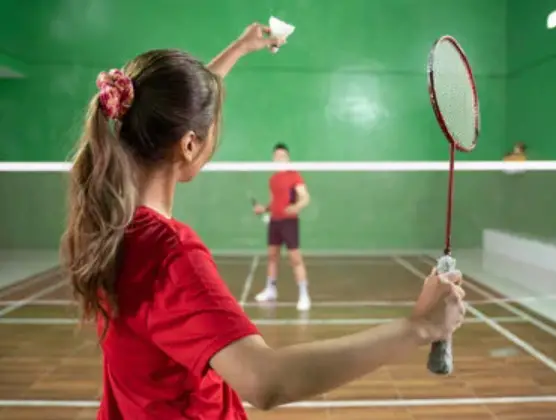Badminton is one of the most popular sports around the world. Badminton is a fast-paced and exciting game that requires skill, agility, and precision. In this game, the badminton racket plays a highly significant role, and it is therefore essential to have a well-strung racket that has the right balance for your game. Badminton strings are the vital component that defines the characteristics of a racket, which directly impact the player’s performance on the court. It is worth noting that the string type and tension significantly influence the gameplay, making it crucial to choose the right ones.
In this article, we will go over the different types of badminton strings, how to choose the right string, and their properties, among other things.
What are the different types of badminton strings?
Badminton strings come in various materials and thicknesses, each possessing specific properties that differentiate them from one another. String materials can range from natural gut, synthetic gut, multifilament, or synthetic strings.
- Natural gut strings
Natural gut strings are the most premium strings that offer players a fantastic feeling of power, comfort, and control. These strings are natural, made from animal guts, which is known for their superior elasticity, and they provide a more consistent feel as you strike the shuttlecock. Although natural gut strings have the best feel, they come with a hefty price tag and are susceptible to fraying, making them less durable than synthetic strings.
- Synthetic gut strings
Synthetic gut strings are also referred to as nylon strings. They are popular because they provide a low-cost alternative to natural gut strings. Synthetic gut strings are exceptionally durable and offer a consistent and responsive feel. Although synthetic gut strings do not provide the same level of feel as natural gut strings, they are, however, a good option for beginners because of their affordability and durability.
- Multifilament strings
Multifilament strings are much more advanced than synthetic gut strings because they are made up of many threads of synthetic, natural, or a combination of materials. These fibers are micro-braided together to form the final product. Multifilament strings have more elasticity, providing a better shock-absorption effect, which reduces the risk of injuries. They possess a softer and more comfortable feeling compared to synthetic strings.
- Synthetic strings
Synthetic strings are suitable for players that want a combination of durability and power. They are made from durable materials and possess a firmer feel that offers more power to the player. Synthetic strings are an excellent option for players that strike hard and aggressively but require a more durable string than natural gut strings.
How to choose the right string for your playing style?
Your playing style is an essential consideration when looking for the perfect badminton string to optimize your performance. While some players prefer more control, others prioritize power or a blend of both properties. Therefore, the key factor that defines a suitable string for you is your playing style. Below are some of the factors to consider when choosing the perfect badminton string:
- String thickness
The thickness of the string is the determining factor in choosing a string for power, control, or a balance between both. The thinner the string, the more power it will deliver, but it will have less durability and control. Thick strings provide more control and durability but offer less power. A good blend of power, control, and durability is around the 0.64-0.69mm range of string thickness.
- Tension
String tension also plays an essential role in determining a string’s responsiveness and control. Higher string tension offers more control on your strokes but provides less power, while lower tension provides more power but less control.
As a guide, advanced players tend to use higher tensions, but it is essential to consider the type of string alongside your playing style.
What is the recommended tension for badminton strings?
The correct tension for your badminton racket is crucial as it directly affects your game’s performance. As mentioned earlier, the string’s tension affects both power and control, whereby high tension provides more control and less power, while low tension provides more power and less control. The recommended tension for badminton strings is between 22-30lbs, depending on your playing style and physical ability.
Using a professional stringer to measure the appropriate tension for your playing style and the type of string you’re using is recommended to optimize your gameplay.
How often should I replace badminton strings?
Over time and extended use, badminton strings lose tension and elasticity, which affects the racket’s overall performance and feel. When badminton strings lose their elasticity, they feel stiff and dead, and a player is more likely to experience more vibrations in their hand, paddle, or arm.
Therefore, it’s essential to replace badminton strings frequently, especially for competitive players. Typically, players that play regularly and competitively should consider restringing their racket every couple of months, and those that play less frequently should consider restringing their racket every four to six months.
What are the best badminton string brands in the market?
There is a wide variety of badminton string brands in the market, and choosing the best one can be challenging. However, several brands dominate the badminton string market, and they include Yonex, Victor, Li-Ning, Ashaway, and Wilson. These brands offer strings that are durable, provide excellent feel and performance, and offer a good balance of power and comfort.
What factors determine the badminton string’s durability?
Durability is a crucial factor when selecting badminton strings. The string’s durability determines how often you will have to replace the strings and how much you will spend on restringing your racket. Several factors influence the durability of the badminton string, including:
- String thickness
Thin strings tend to snap more quickly, reducing their overall durability, while thicker strings are more durable and can last longer.
- String material
Different string materials have varying degrees of durability, with natural gut strings being the least durable.
- Frequency of play
The more frequent you play, the faster your strings will lose their elasticity and decline in virtually all other significant string properties.
- String tension
The tension used in stringing your racket may affect the durability. Higher tensions could result in faster string breakage.
Conclusion
In conclusion, there’s no denying that badminton strings are an essential part of any racket set up, but choosing the right string type and tension for you can prove difficult. Considering the string material, thickness, tension, and your playing style is crucial in selecting the best string for your badminton racket and ultimately enhancing your on-court performance. Ensure you re-string your racket frequently to maximize its performance and feel. Remember that the more suitable your strings are to your playing style, the better the output in your gameplay.






